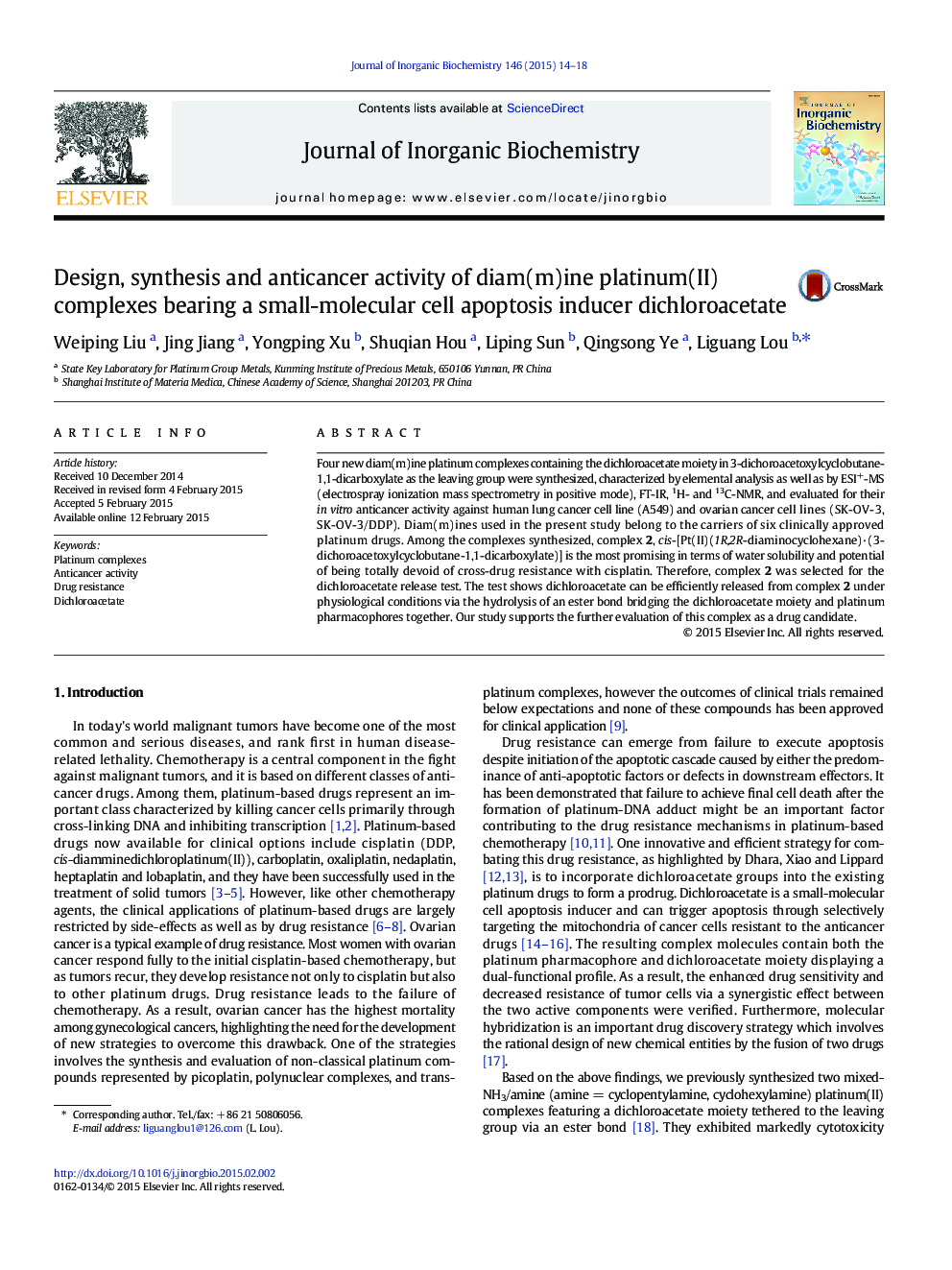| Article ID | Journal | Published Year | Pages | File Type |
|---|---|---|---|---|
| 1316107 | Journal of Inorganic Biochemistry | 2015 | 5 Pages |
•Four new platinum complexes containing a dichloroacetate moiety were synthesized.•The dichloroacetate moiety can be released from the complexes in water at 37 °C.•They have potential to overcome the resistance of cancer cells to cisplatin.•One complex is very promising as a new anticancer drug candidate.
Four new diam(m)ine platinum complexes containing the dichloroacetate moiety in 3-dichoroacetoxylcyclobutane-1,1-dicarboxylate as the leaving group were synthesized, characterized by elemental analysis as well as by ESI+-MS (electrospray ionization mass spectrometry in positive mode), FT-IR, 1H- and 13C-NMR, and evaluated for their in vitro anticancer activity against human lung cancer cell line (A549) and ovarian cancer cell lines (SK-OV-3, SK-OV-3/DDP). Diam(m)ines used in the present study belong to the carriers of six clinically approved platinum drugs. Among the complexes synthesized, complex 2, cis-[Pt(II)(1R,2R-diaminocyclohexane)·(3-dichoroacetoxylcyclobutane-1,1-dicarboxylate)] is the most promising in terms of water solubility and potential of being totally devoid of cross-drug resistance with cisplatin. Therefore, complex 2 was selected for the dichloroacetate release test. The test shows dichloroacetate can be efficiently released from complex 2 under physiological conditions via the hydrolysis of an ester bond bridging the dichloroacetate moiety and platinum pharmacophores together. Our study supports the further evaluation of this complex as a drug candidate.
Graphical abstractThe complex 2, characterized by a dichloroacetate moiety in the leaving group and 1R,2R-diaminocyclohexane as the carrier, is able to release the dichloroacetate moiety, shows great anticancer activity as well as displays potential of being totally devoid of cross-drug resistance with cisplatin.Figure optionsDownload full-size imageDownload as PowerPoint slide
